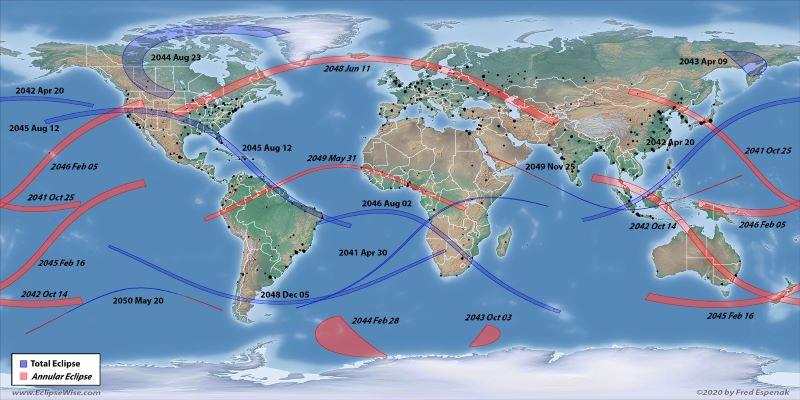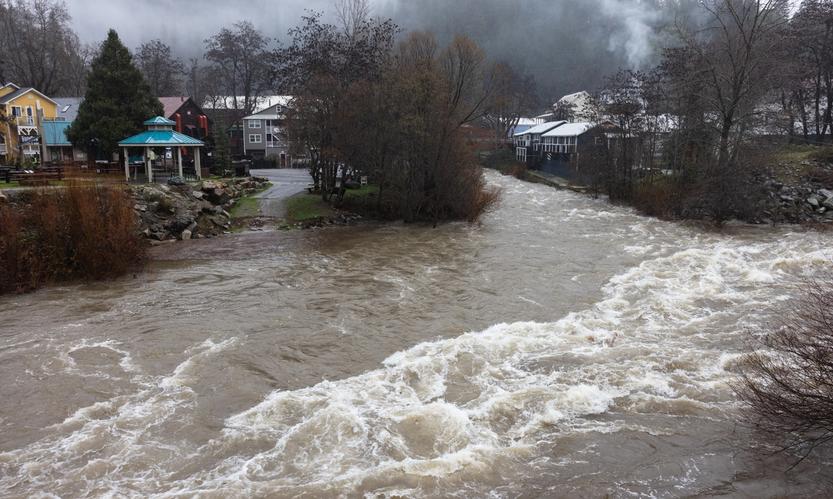Total Solar Eclipses, 2026-2034
April 11, 2024

This map traces out the total solar eclipses and annular eclipses from 2041 to 2050.
Image Source: Fred Espenak/Eclipsewise via earthsky.org
After taking flack from a subscriber for not carrying any information about the total solar eclipse crossing a large swath of the U.S. early this week, I decided our readers could use plenty of advance notice for upcoming moments when the moon casts a shadow on the Earth.
Next up, on August 12, 2026, a shadow lasting only 2 minutes and 18 seconds will pass over northeastern Greenland, be strongest on the western tip of Iceland, and cease in Spain. Almost a year later, on August 2, 2027, the darkening of the sun will last for 6 minutes and 23 seconds across Morocco, southern Spain, Algeria, Tunisia, Egypt (strongest), Saudi Arabia, and Yemen. Also, a little less than a year later, on July 22, 2028, the moon will totally block the sun for 5 minutes and 10 seconds along a path stretching from northwestern (greatest strength) to southeastern Australia.
After more than a two-year hiatus, a somewhat shorter (3 minutes and 43 seconds) total solar eclipse will occur on November 2, 2030, to shadow parts of southern Africa (Namibia, Botswana, S. Africa, Lesotho), and Australia. Then, a really tiny and short (2 minutes and 37 seconds) shadow will fall on a tiny part of eastern Russia and the upper northwest coast of Alaska on March 30, 2033.
As for myself, I like the idea of aiming for my first in 2028, the year I turn 80. Hey, the lonely, extremely dry territory of northwestern Australia is a part of the world I’ve wanted to see for decades and the chance of clouds in July 2028 are slim to none.
Meanwhile, those locals who don’t want to travel anywhere to see totality just have to stay alive until 2045, the next time when one will be passing directly over northern California.
Featured Articles

Storms Bring Heavy Rainfall and Local Disruptions →
December 22, 2025
Sierra County faces power outages and water issues amid heavy rainfall and storm warnings.
215 Animals Seized for Cruelty from Grass Valley Property →
December 22, 2025
Human Remains Found Near South Yuba Bridge in March Identified →
December 17, 2025
Transfer Station Burn Suspended After Community Concerns →
December 16, 2025
Sierra Hardware Plans Extensive Repairs After Flood Damage →
December 8, 2025
